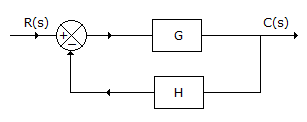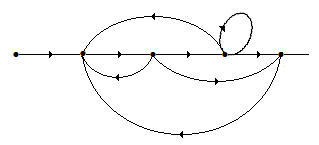ECE :: Automatic Control Systems
-
For type 1 system the velocity lag error is
-
For
 as ω approaches infinity, the magnitude approaches zero and phase angle approaches - 90°.
as ω approaches infinity, the magnitude approaches zero and phase angle approaches - 90°. -
For any test point s on the real axis, the sum of angular contributions of the complex conjugate poles is
-
For the system in the given figure G varies slightly, the ratio of open loop sensitivity to closed loop sensitivity is

-
The M circle for M = 1 is the
-
Which of the following can act as error detecting devices
- a pair of potentiometers
- a pair of synchros
- a differential transformer
- a metadyne
- a control transformer
-
The loop transfer function of a feedback system is
 . The number of asymptotes of its root loci are
. The number of asymptotes of its root loci are -
Assertion (A): If minimum phase system has a gain margin of 8 dB and phase margin of 21°, the system is stable.
Reason (R): For a minimum phase system both GM and PM must be positive for the system to be stable.


 Whatsapp
Whatsapp
 Facebook
Facebook


